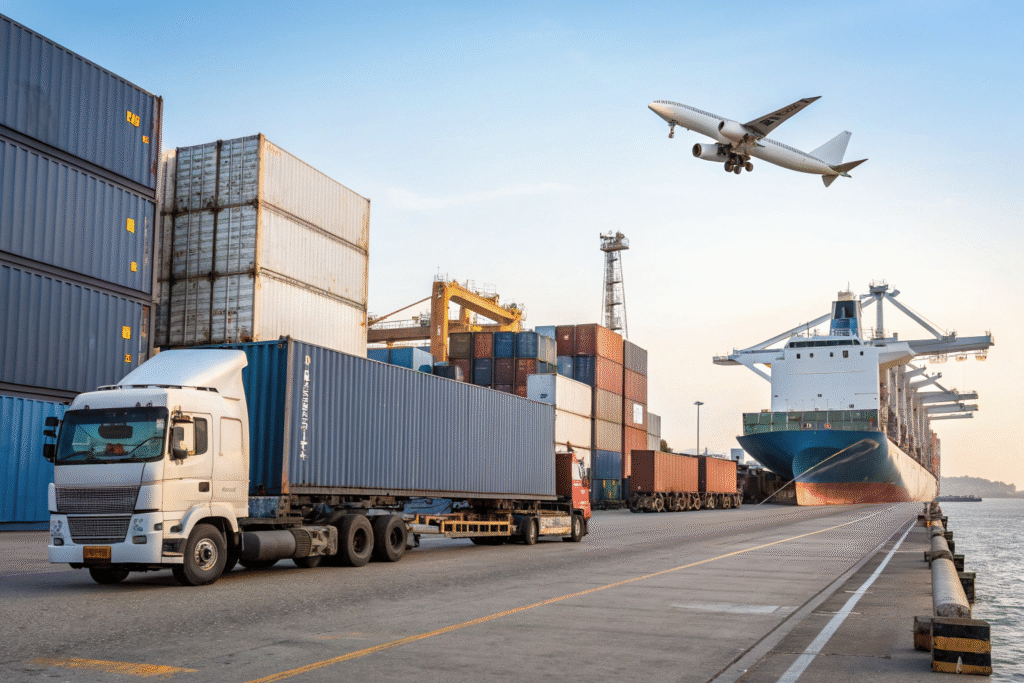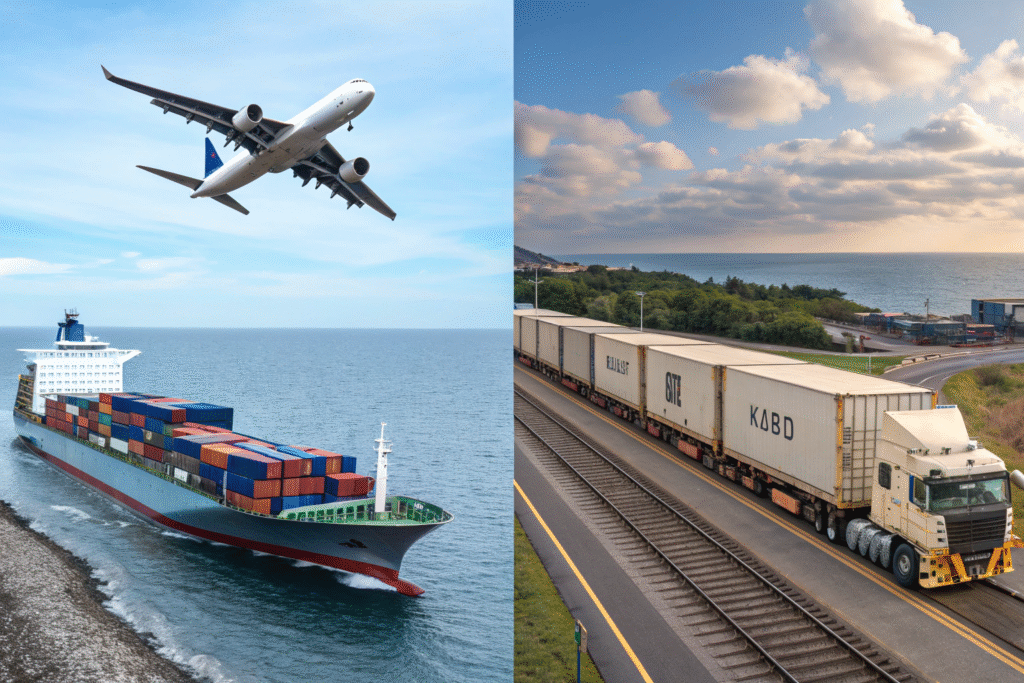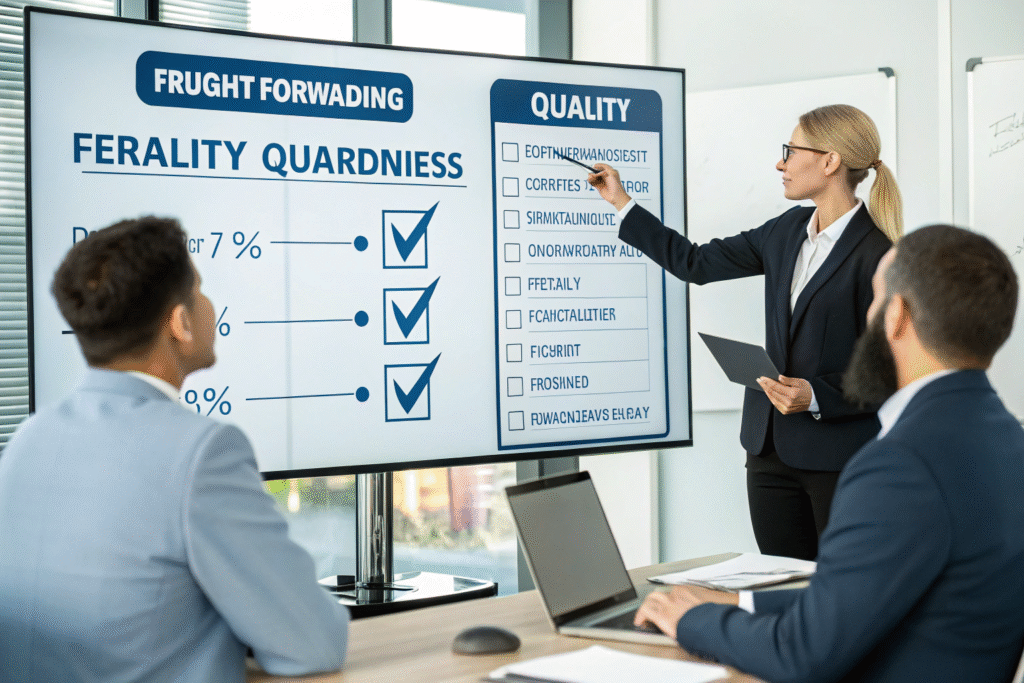Freight forwarding is one of those things that everybody in trade hears about, but honestly, not everyone really understands. I’ve seen company owners lose time and money just because they thought shipping was only about booking space on a vessel. Well, it isn’t that simple. The truth is, without the right partner, delays pile up, paperwork gets messy, and costs quietly eat away profits.
At its core, freight forwarding means organizing the entire journey of goods across borders—by sea, air, rail, or road. The forwarder is like the glue between shippers and carriers, making sure goods move safely, on time, and without unnecessary expense.
In my experience, many of my clients are experts in their own products—fashion, electronics, gifts—but when it comes to customs forms or picking the right carrier, they look at me with the same confusion I had when I first started in logistics. And I get it. Global shipping is complex, and honestly, a bit intimidating. That’s where forwarders step in.
Why Do Businesses Need Freight Forwarding?
Let’s be real—international trade is a jungle. Tariffs change overnight, customs officers ask for documents you’ve never heard of, and schedules slip for reasons nobody explains. I’ve seen clients frustrated to the point of giving up on markets just because they didn’t have the right logistics support.
Businesses need freight forwarding because forwarders bring industry knowledge, strong carrier networks, customs clearance expertise, and better shipping schedules that keep goods moving.
I often compare forwarders to travel agents, but for cargo. Instead of booking one flight, we arrange space for thousands of cartons or containers. Because of the volume we handle, we can negotiate rates that an individual business simply won’t get. Plus, the amount of paperwork—we deal with it so our clients don’t have to.

How Do Freight Forwarders Save Costs?
From my observation, small importers benefit the most. If you only ship half a container of apparel, you don’t want to pay for a full box. That’s where LCL shipping comes in. We consolidate multiple shipments together, which cuts down cost. It’s surprisingly efficient. Digital platforms like Flexport make this process more transparent, so buyers can actually track how much they save.
What Risks Do They Help Manage?
Risk is everywhere in logistics. A missing stamp on a document can hold goods for weeks, and damaged cargo is more common than people admit. I think this is where forwarders really prove their value. We provide cargo insurance and make sure every shipment follows the right regulations. Using tools like Maersk’s tracking system, we keep clients informed, which honestly reduces a lot of stress.
How Does the Freight Forwarding Process Work?
The process looks neat on paper, but in practice it feels like solving a puzzle. Each shipment is unique, with its own timing, paperwork, and challenges. Still, there’s a typical flow most shipments follow.
Usually, freight forwarding goes like this: pickup at the factory, export customs clearance, international transportation, import clearance, and final delivery.
From my perspective, the job of a forwarder is making sure none of these links break. If one link snaps, the whole chain collapses.

What Happens During Export Customs Clearance?
This stage is tricky. We prepare a Bill of Lading, commercial invoices, and packing lists. Then we work with China Customs to clear the goods. Actually, many delays happen right here. Missing one small piece of information can mean weeks of waiting. I always tell new clients: “Don’t underestimate paperwork.”
How Is Final Delivery Managed?
Once goods land in the U.S., there’s still a long road ahead. We need customs brokerage to process entries. After clearance, the cargo doesn’t magically appear at the warehouse—it moves by truck or rail. Companies like Union Pacific Rail or regional haulers take care of the last leg. This is the moment when clients often breathe a sigh of relief because the goods are finally in their hands.
What Are the Main Types of Freight Forwarding Services?
Not every shipment should move the same way. I’ve had clients push for air freight because they want speed, only to realize the cost is shocking. On the other hand, some stick to ocean freight even when timeliness is critical. Choosing the right service makes or breaks the supply chain.
The common types of freight forwarding include ocean freight, air freight, rail freight, and road freight. Each has its pros and cons.
A smart forwarder doesn’t just push one option. We look at the product, the deadline, and the budget, then suggest the right balance.

Why Choose Ocean Freight?
Ocean freight is still king for large volumes. It’s cheap per unit, and carriers like COSCO Shipping cover almost every major route. Pricing is volatile though, so tools like the Freightos Baltic Index help track market trends. Honestly, if you can afford the time, sea freight usually gives the best value.
When Is Air Freight the Best Option?
Sometimes speed wins. For high-value electronics or urgent fashion goods, air freight is worth it. Standards set by IATA cargo make it reliable, and companies like DHL Express offer global reach. From my observation, air freight works best when missing a deadline would cost more than the higher freight rate.
How to Choose the Right Freight Forwarder?
Picking a forwarder is almost like choosing a business partner. If you get it wrong, the losses go beyond money—you risk your client relationships. Well, I’ve seen both sides. Some businesses thrive because they picked the right forwarder. Others struggle endlessly.
To choose the right forwarder, you need to check their experience, their network, how transparent they are with pricing, and their customs clearance skills.
In my opinion, the cheapest forwarder is rarely the best. A forwarder that communicates well and solves problems quickly can save you from much bigger headaches.

What Experience Should You Look For?
Experience matters. A forwarder who knows the China–U.S. route inside out can solve problems faster. Certifications from FIATA prove professionalism, while resources like Transport Topics help compare major players. Clients often ask me, “How do I know if a forwarder is reliable?” My answer: look at their track record and who they’ve worked with.
How Important Is Digital Tracking?
Visibility is now non-negotiable. Clients expect to know where their goods are at all times. Systems like CargoWise integrate data across the supply chain, while platforms like project44 make estimated arrival times more accurate. Actually, I think digital tracking is what separates modern forwarders from outdated ones.
Conclusion
Freight forwarding is not glamorous, but it’s the backbone of global trade. It connects factories in China with buyers in the U.S. and beyond. From customs compliance to on-time delivery, it’s the silent partner keeping supply chains alive.
As someone who has worked in this industry for years, I’ve seen businesses succeed simply because they chose the right logistics partner. And frustratingly, I’ve also seen great products fail because delivery went wrong. In the end, freight forwarding isn’t just about moving goods—it’s about trust, timing, and long-term growth.









